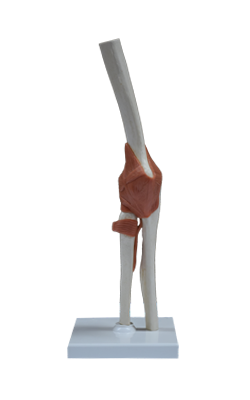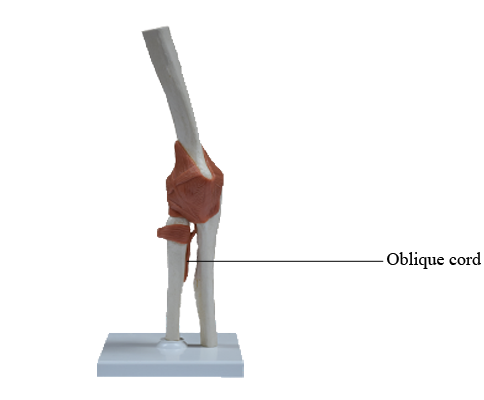Main Model

Anterior : Oblique cord

Oblique Cord
The oblique cord is a ligament between the ulnar and radius bones in the lower arm near the elbow. It takes the form of a small, flattened band, extending downward and lateralward, from the lateral side of the ulnar tuberosity at the base of the coronoid process to the radius a little below the radial tuberosity. Its fibers run in the opposite direction to those of the interosseous membrane of the forearm.
The oblique cord is called by other names including oblique ligament, chorda obliqua, radio-ulnar ligament, chorda oblique antebrachii anterior, proximal interosseous band, dorsal oblique accessory cord, proximal band of the interosseous membrane, superior oblique ligament, oblique ligament proper, round ligament, and ligament of Weitbrecht.
It has no known function and can be cut without apparent consequence.
Structure
Its mean length is 3.4 cm (range 2.4 to 4.2 cm) and it tapers from the ulna to the radius end, being at the ulna 9 mm, in its middle 7 mm, and its radius end 4 mm.
Function
It has been suggested to strengthen the interosseous membrane proximally, provide restraint for the rotatory movements of the forearm, or that the ligament may stop bone bending and preventing buckling failure. However, due to the orientation of its fibers, the oblique cord is unlikely to transfer force due to limb loading from the radius to the ulna.